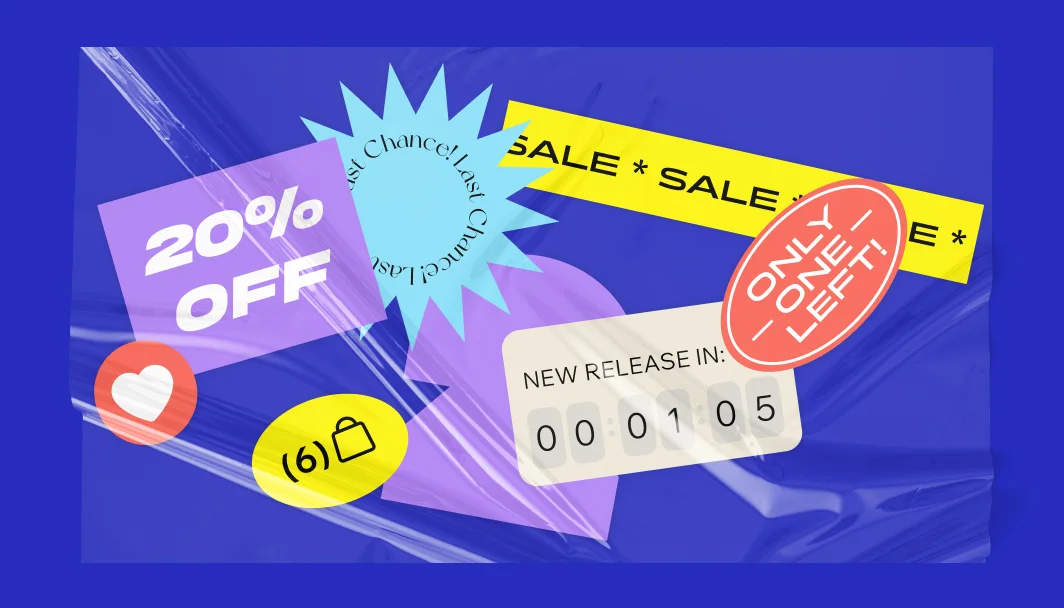
Have you ever wondered why some businesses seem to effortlessly turn every visitor into a customer? Or why certain products fly off the shelves while others linger, untouched? The secret often lies in a field that might surprise you - psychology. The ability to tap into customers' minds and influence their buying decisions can be a game-changer for small businesses. This guide aims to demystify how the fascinating world of psychology intersects with the art of selling, bringing you science-backed sales tips to help boost your sales.
Understanding the Psychology Behind Buying Behavior
Before diving into specific strategies, it's important to understand why psychology plays such a crucial role in influencing buying behaviors. Research suggests that consumers are not always logical beings making rational choices - instead, emotions, subconscious cues, and cognitive biases often drive their decisions(1).
For example, a study conducted by Gerald Zaltman, a professor at Harvard Business School, concluded that 95% of purchasing decisions are subconscious(2). These findings suggest that sales strategies focusing solely on logical factors like price or product features might not be enough. We must delve into the realm of psychology to truly understand and influence consumers.
Leveraging Cialdini's Principles of Persuasion
A leading figure in the intersection of psychology and marketing is Dr. Robert Cialdini, who in his book "Influence: The Psychology of Persuasion", outlines six core principles of persuasion(3). These principles are Reciprocity, Authority, Social Proof, Consistency, Liking, and Scarcity. While originally written in the context of face-to-face interactions, these principles have proven to be just as effective in the digital marketing realm.
Reciprocity: This principle states that people feel obliged to give back when they receive. Offering customers something of value first—such as a free sample, a consultation, or informative content—increases their chances of returning the favor by making a purchase. It's not about manipulation, but about offering genuine value that makes your customers want to engage with your business. For example, content marketing is a popular strategy that leverages this principle, providing valuable information while subtly promoting a product or service(4).
Authority: People trust experts. By establishing yourself as an authority in your field, customers are more likely to trust your products or services. Take the company HubSpot, for instance. They offer free resources and guides, demonstrating their expertise and building trust with their users(5).
Social Proof: We're social creatures by nature, and we tend to follow the crowd. This principle suggests that when people see others using and enjoying a product or service, they are more likely to try it too. Customer reviews, testimonials, and influencer endorsements are all effective ways to leverage social proof.
Consistency: According to Cialdini, people have a natural desire to be consistent. Once they commit to something, they are more likely to follow through with it. You can leverage this principle by getting a small commitment from your customers first, which can eventually lead to larger commitments.
Liking: We naturally prefer to buy from people or companies that we like. This liking can come from shared values, amazing customer service, or a relatable brand story.
Scarcity: The fear of missing out can be a powerful motivator. Limited-time offers and low-stock alerts can create a sense of urgency that accelerates the buying process.
Crafting a Comprehensive Sales Strategy
While these psychological principles can significantly boost your sales, they are just one piece of the puzzle. A holistic sales strategy also takes into consideration the quality of your product or service, your understanding of the target market, and the customer journey. It's important to remember that sales are about more than transactions—they are about building relationships.
Successful small businesses understand their customers' needs, provide genuine value, and use every interaction as an opportunity to build trust. Your goal should not just be to sell a product, but to create a positive customer experience that leads to repeat business and referrals.
By understanding and integrating psychology into your sales strategies, you are not just improving your numbers - you're improving your relationships too. The science-backed sales tips we've discussed are not about manipulating your customers but rather about understanding them better and meeting their needs more effectively.
In the end, the art of selling is about creating value. When your customers feel valued and understood, they are more likely to trust your business and become loyal customers. So, take these psychological principles and strategies, adapt them to your unique business context, and start transforming the way you sell today.
Conclusion
Sales is both a science and an art, requiring a careful balance of analytical skills, creativity, and empathy. Understanding the psychology behind buying behavior can give you a significant edge in today's competitive market. As you begin to apply these psychology principles to your sales strategies, remember that genuine value and customer relationships are at the heart of every successful sale.
Happy selling!
References:
Hoyer, W.D., & MacInnis, D.J. (2018). Consumer Behavior. Cengage Learning. ↩
Zaltman, G. (2003). How Customers Think: Essential Insights into the Mind of the Market. Harvard Business Review Press. ↩
Cialdini, R.B. (1984). Influence: The Psychology of Persuasion. Harper Business. ↩
Content Marketing Institute. (n.d.). What is Content Marketing? https://contentmarketinginstitute.com/what-is-content-marketing/ ↩
HubSpot. (n.d.). About Us. https://www.hubspot.com/company/about ↩
